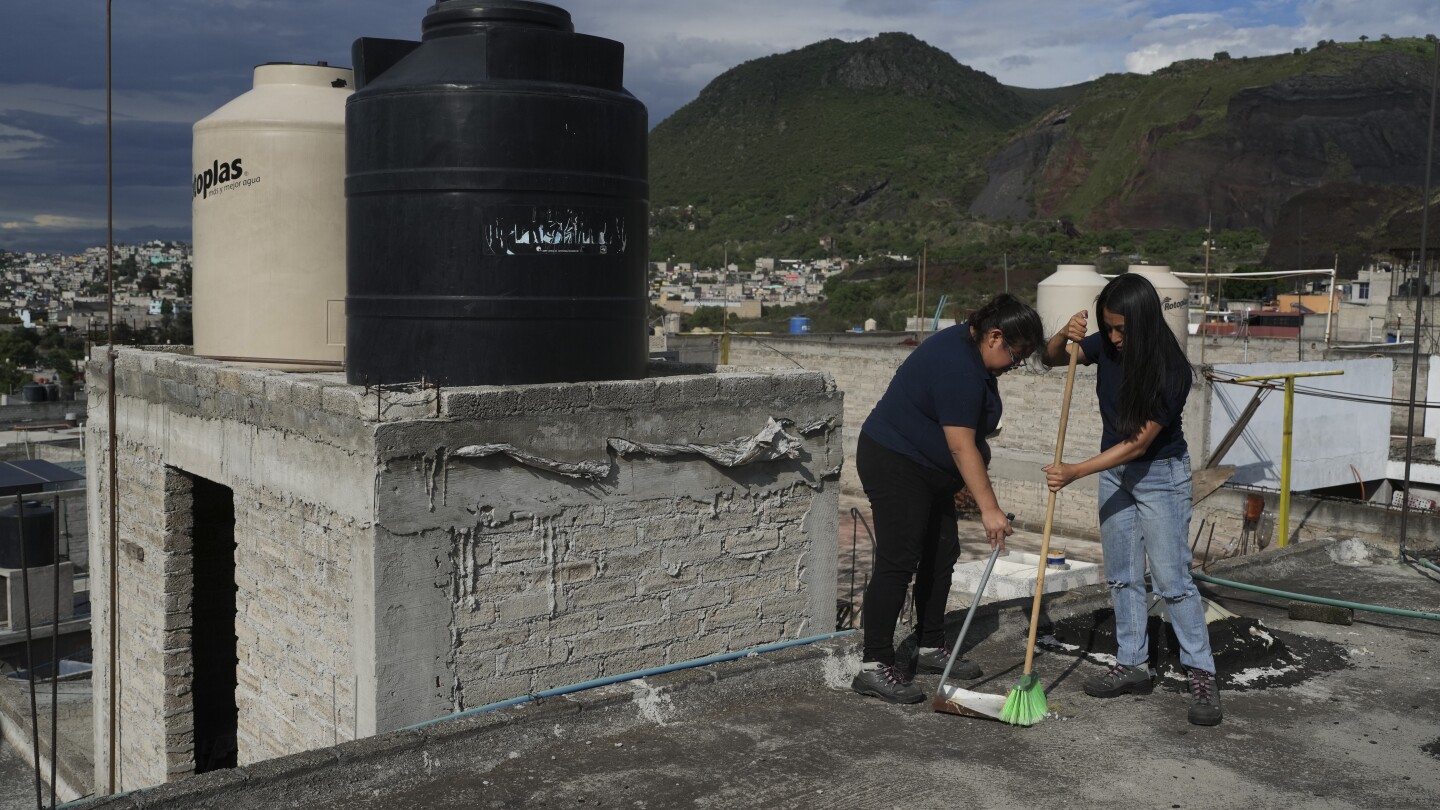Gliding above her neighborhood in a cable car on a recent morning, Sonia Estefanía Palacios Díaz scanned a sea of blue and black water tanks, tubes and cables looking for rain harvesting systems.
“There’s one!” she said, pointing out a black tank hooked up to a smaller blue unit with connecting tubes snaking up to the roof where water is collected.
“I’m always looking for different rainwater harvesting systems,” she said, smiling. “I’m also always looking for places to install one.”
Driven by prolonged drought and inconsistent public water delivery, many Mexico City residents are turning to rainwater. Pioneering company Isla Urbana, which does both nonprofit and for-profit work, has installed more than 40,000 rain catchment systems across Mexico since the company was founded 15 years ago. And Mexico City’s government has invested in the installation of 70,000 systems since 2019, still a drop in the bucket for the sprawling metropolis of around 9 million.
But there’s little education and limited resources to maintain the systems after installation, leading the systems to fall into disuse or for residents to sell off the parts.



Hmm.
I think that a major problem here is that the water that they’re getting isn’t “free” in terms of Mexico City’s overall water problem. Like, if they capture water, there’s probably two things that don’t happen that would have happened:
It would have gone into a river or other body of water.
It would have drained into the ground, headed down to the eater table.
The problem is that those other two things are…actually depleted sources of water for Mexico City. Like, they’re running low on surface water as well as seeing ground subsidence because groundwater is being overdrawn.
https://eos.org/articles/groundwater-pumping-is-causing-mexico-city-to-sink
Maybe putting water into tanks immediately might save a bit due to limiting evaporation. But I think that most of what’s happening here are just residents of Mexico City fighting other residents for a larger share of what water is available.
I wonder if it’s possible to bring in water elsewhere from in Mexico. In California, we have a large water project that pumps water over mountains from the temperate rainforest part of the Pacific Northwest to the arid south, recovers part of the energy expended as the water descends.
Or if Mexico City could just desalinate water, which we also do. Whole ocean out there.
You’d want somewhere to be relatively low-elevation for that.
kagis
Ouch.
https://en.wikipedia.org/wiki/Mexico_City
Yeah…That’s not great.
Maybe just going to have to shift population to a different city in Mexico.
https://en.wikipedia.org/wiki/List_of_cities_in_Mexico
The second-largest city is Tijuana, which is right on the Pacific – so unlimited water, as long as you have the energy – and just above sea level.
The third-largest city is Ecatepec, at the same altitude as Mexico City. I wonder if it has water problems.
checks
Apparently it adjoins Mexico City.
https://www.courthousenews.com/illicit-water-trade-worsening-hydraulic-crisis-in-state-of-mexico/
Looks like the next largest city is León, Guanajuato.
It’s also pretty high-altitude, on the same plain as Mexico City. 1,815 m (5,955 ft). Does it have lots of water?
kagis
Sounds like no.
https://www.scielo.org.mx/scielo.php?pid=S2007-09342022000300527&script=sci_arttext&tlng=en
Well, maybe the answer is just gonna have to be shifting population to Tijuana and doing desalination there. We have a large desalination plant in San Diego in California, just to the north of Tijuana, so I’m sure that it’s technically doable.
https://en.wikipedia.org/wiki/Claude_"Bud"_Lewis_Carlsbad_Desalination_Plant
Says that it took us 14 years to do ours from permitting to activation, though, so unless Mexico can expedite that, they probably wanna get moving on that.
EDIT: It sounds like they’ve been trying to build one, and they indeed consider it to be urgent:
https://voiceofsandiego.org/2024/07/29/border-report-rosarito-desal-plant-could-finally-get-off-the-ground/